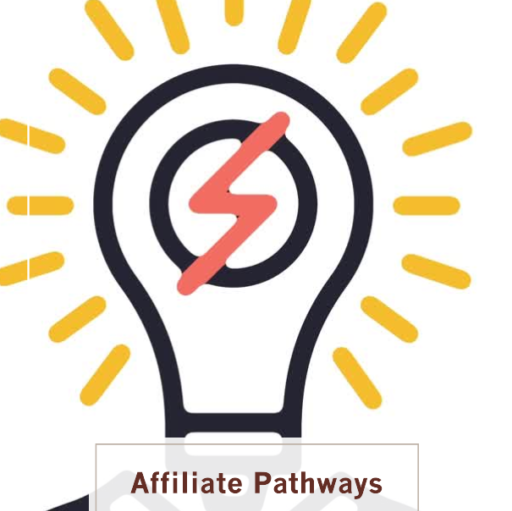
What I am hoping to impart to you is the basic knowledge required to become an affiliate marketer, not just any affiliate marketer but a successful one. So, treat this post as your niche profit classroom where you’ll learn how to increase your conversion rate.
Success in this business means how frequently the traffic converts — that means how often and in what numbers a given volume of traffic results in actual purchase. A conversion rate of 20%, for example, is considered good. The higher the better of course.
The conversion rate gives the ultimate proof of how profitable your niche is — and this metric can also be found with the right tools — all of which are provided readymade (Below) . . .
Click Here For Wealthy Affiliate.
What Comes Next?
Once you have acquired an overview of the process and the key metrics, the next most important issue is: optimisation . . . this is essentially a balancing act in which you assess one priority against another, a trade-off between say, search volume and competition. For example, you find a keyword that has a high search volume but it also has a high competition. What does that mean? That means it will be be very hard to rank for.
How do you get around that? You go the next available candidate which still has a high search volume but a lower competition. And you repeat that process until you find the highest search volume with the lowest competition. In this way, you can become your own search engine optimisation company.
Is There A Better Way?
A more effective strategy would be to go for what are called long tailed keywords. Here’s an example. “Affiliate Marketing” may have high competition; however, the long tail keyword phrase, “affiliate marketing for beginners” — which embeds the main keyword “affiliate marketing” — may have sufficiently high search volume but lower competition.
In the end, it comes down to the tools we use — especially those which provide a free subscription for beginners to get a feel for it. See below.
Grab here your free Wealthy Affiliate membership .
Why Platforms Matter
One of the best reasons I can think of for using a professional tool is the camaraderie. Platforms not only share our aspirations but also have a vested interest in our success.
It’s natural to feel at sea, at first — I suspect some of the most successful marketers are those who felt the same way when they started. The only difference between them and the rest is that they never gave up.
As someone once said, showing up everyday is getting half way there. And one way of ensuring that is working within a platform.
And why do I say that? Because, I find it hard to imagine how anyone can get insights into such critical conversion metrics such as click through rates (CTR); conversion rates (CVR); average order value (AOV) — without going into an affiliate network platform. Google Analytics is a good place to start. Watch their videos.
Not All Metrics Are Created Equal
And, moving beyond those metrics I just mentioned above, there are also others to consider: earnings per click (EPC), for example. How much could you earn for every 100 clicks? This is a more nuanced measure of success than simple conversion rates. EPC gives you a more vivid understanding of not only how profitable a niche is but also which affiliate program pays more.
Is There More? — You Bet
Yes of course. We just got started. No, I’m just kidding.
Two more issues at least:
- The Content
- The Buyer
The Content
Affiliate marketing at core is a content creation business. And, so naturally, writing content that resonates with your audience is, therefore, crucial.
Imagine this: you jump on Amazon to find a nutrition product and they show you a beauty product. Although this specific example is just that, an example, an illustration of what relevance means, Amazon’s searches are not always completely accurate. Sometimes you’ll notice other products sneaked into the list. Other brands seeking an opportunity decide to squeeze in — just in case. But for you as a consumer this is an irritant, mostly, I think. You came to look for look for A and you’re shown B. How does that make you feel?
That’s exactly what your potential customer feels. The worst downside of losing relevance is that it eats into your authority — which, in turn, pushes the other metrics down. Everything can come crashing down.
That’s why you need to gauge this aspect constantly — using all your available resources which includes not just the tools at your disposal but also your own sensibility, your empathy, above all You can never under estimate yourself . . . it pays to be human even in the age of AI.
Now to the second issue.
The Buyer
Behind every purchase is a decision tree — essentially, a map of how they arrived at their destination: the crucial moment of conversion. Your job as a is to discover this consumer buyer behaviour – and then encourage it.
Understand one thing: the moment the buyer engages with your website, they have embarked on an expedition. With the help of digital tools, we can understand how they transformed from mere browsers to actual buyers. What was the moment of conversion? How did they make the decision? What do you think helped them make the decision? Such questions can be answered by poring over the data and is an essential part of this project.
You need to understand your consumer through this process — both quantitatively and qualitatively — so that you can promote this behaviour. From that point onwards, the question is one of finding more customers of the same ilk. Be the travel agent who shows the prospective tourist interesting destinations.
Yep, we’re also in the travel business now. We’re also our own travel agent — trying to find highly profitable niche markets.
Bon voyage.
